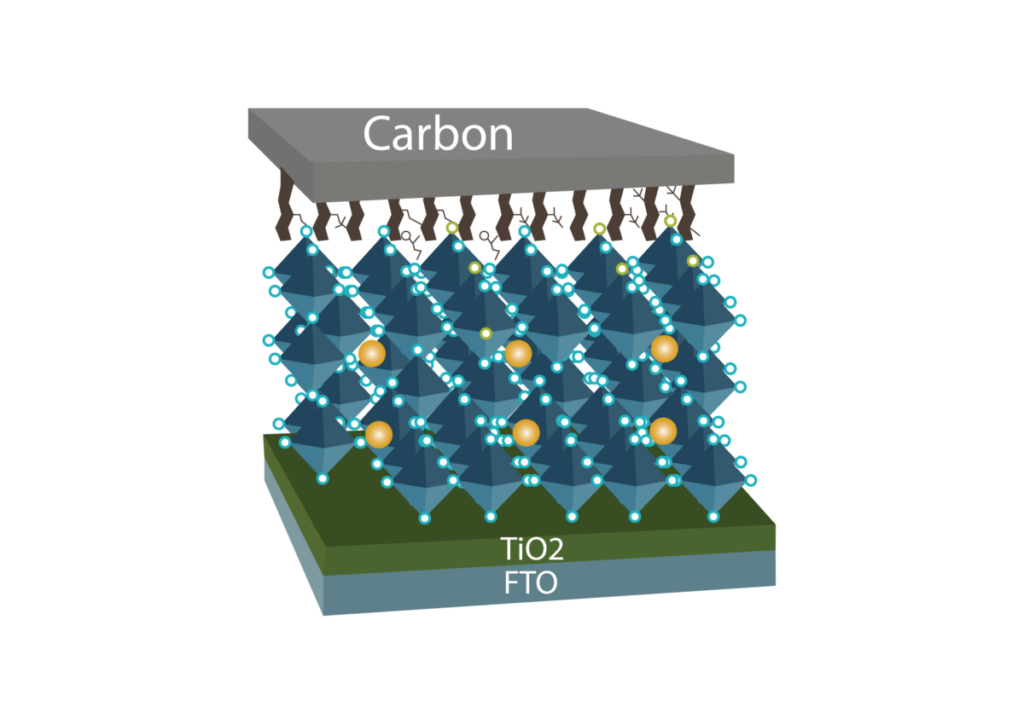Researchers in China have outlined a new surface engineering strategy to build low-cost solar cells without a hole transport layer. The devices were treated with benzoylcholine halide to reduce non-radiation recombination and achieved remarkable efficiency and stability.
May 21, 2024 Emiliano Bellini
A group of scientists led by the Beihang University in China has developed a carbon-based all-inorganic perovskite solar cell without the use of an expensive hole transport layer (HTL).
In the proposed cell architecture, the absence of the HTL, which prevents direct contact between the carbon electrode and the perovskite, is compensated by engineering the surface composition of the perovskite film.”The bipolar transport of the perovskite layer and the hole extraction ability of the carbon electrode provide a theoretical basis for the preparation of HTL-free CsPbI2Br carbon-based all-inorganic perovskite solar cells,” the researchers said.
The researchers explained that chemical reactions can be used to modify the low-dimensional (LD) structure on a three-dimensional (3D) perovskite surface to improve the crystallization quality. They used, in particular, benzoylcholine halide (BzChX), which they claimed “effectively” passivates halogen vacancy defects on the film, while reducing non-radiation recombination.
“At the same time, an LD/3D heterostructure is formed on the surface of the CsPbI2Br perovskite films modified by BzChI and BzChBr, which promote the gradient energy level arrangement between the perovskite films and carbon electrode,” they emphasized.
The team built the cell with with a substrate made of tin oxide (FTO), an electron transport layer made of titanium oxide (TiO2), an absorber made of a perovskite material known as CsPbI3, and a carbon electrode.
Tested under standard illumination condition, the proposed cell achieved a power conversion efficiency of 14.15%, an open-circuit voltage of 1.21 V, and a fill factor of 79.03%. For comparison, an reference cell withouth the benzoylcholine halide treatment achieved an efficiency of 12.29%, an open-circuit voltage of 1.20 V, and a fill factor of 78.36%.
The academics also found that the cells treated with benzoylcholine halide, after 120 s steady-state output, still retained over 92.9% of their initial efficiency.
Their findings are available in the paper “Low-dimensional/3D heterostructure boosts efficiency and stability of carbon-based CsPbI2Br perovskite solar cells,” published in Cell Reports Physical Science. “This work provides a feasible way to achieve concurrent energy level optimization and defect passivation by constructing an LD/3D heterostructure for high-performance CsPbI2Br-based photovoltaics,” they stated.
This content is protected by copyright and may not be reused. If you want to cooperate with us and would like to reuse some of our content, please contact: editors@pv-magazine.com.
>>> Read full article>>>
Copyright for syndicated content belongs to the linked Source : PV-Magazine – https://www.pv-magazine.com/2024/05/21/carbon-based-perovskite-solar-cell-without-hole-transport-layer-achieves-14-15-efficiency/
